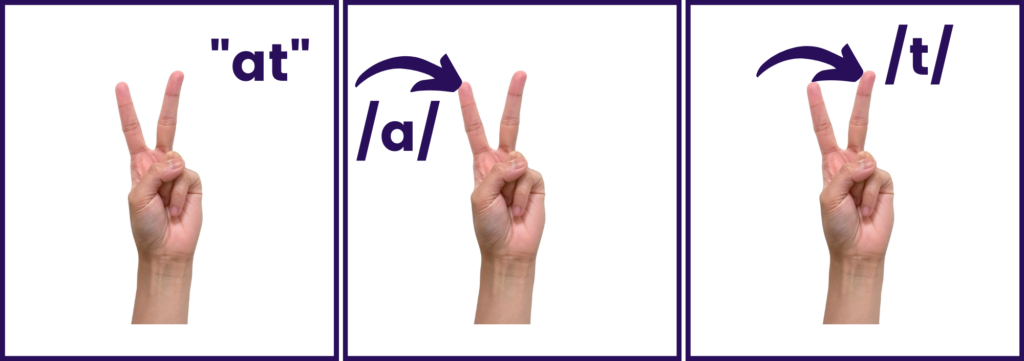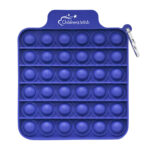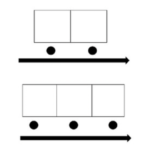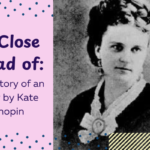Segmenting phonemes is an essential component of early literacy instruction. Segmenting phonemes refers to the process of breaking down spoken words into their individual sound units or phonemes.
The science is clear: students need both word recognition and language comprehension skills. In this third part of a four-part series, we explore the different levels of phonemic awareness. The first post focused on isolating phonemes, the second post focused on blending phonemes, and this one focused on segmenting phonemes.
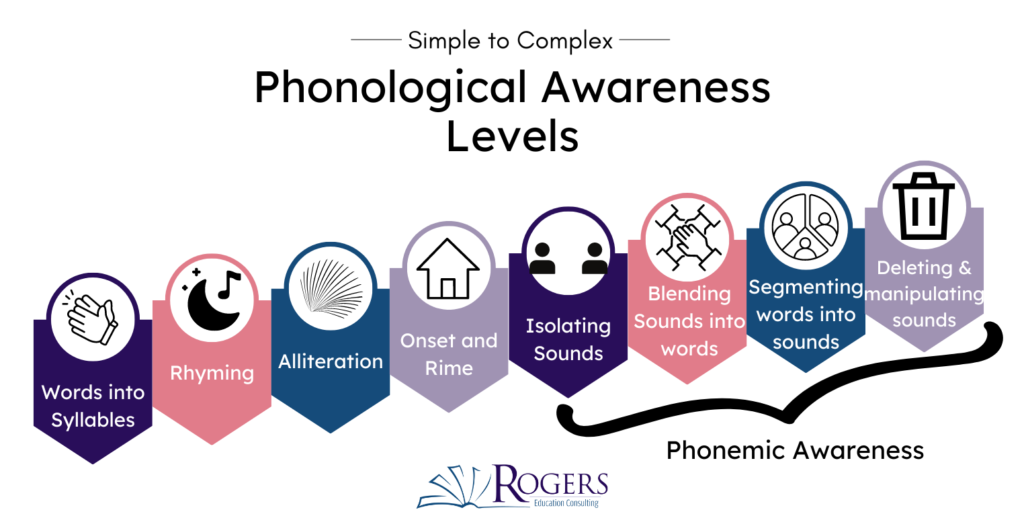
Importance of Segmenting Phonemes
Teaching students how to segment words early in their education is essential. Word segmentation refers to the ability to break down words into smaller units of sound, such as syllables or phonemes. As a result of word segmentation, students learn to identify the individual sounds in words, which is an important skill for reading and spelling.
Instruction Ideas
Visual Segmenting
When teaching students to segment sounds, it’s important to provide visual cues. There are many choices for visual cues. You can use your fingers to count out each phoneme in the word (seen in the picture below), or you can point to your shoulder, elbow, and wrist as you segment sounds. I would love to hear your other ideas below.
Lost and Found
Play a lost and found game with students. Sound out a word to an object you “lost” and have a student “find” it. Example:
Teacher: Help me! I lost my /p/ /e/ /n/
Students: (look around the room. A student finds the pen and says) Here is your /p/ /e/ /n/.
Rest of the students: Hooray (s)he found your pen!
Simon Says
Have students play a childhood favorite; Simon Says. Instead of telling them what to do, segment out the directions for the students. Example:
Simon: Simon says/s/ /i/ /t/
Students: [sit to be safe]
Simon: /j/ /u/ /m/ /p/
Students: [stay still since he didn’t say jump]
Kinesthetic Segmentation
Some research supports kinesthetic learning in the classroom. Kinesthetic learning is thought to enhance the brain’s capacity to retain information. I have always found that my students work a little harder when I add in some movement learning. Have students stand up and hop, clap, or skip the phonemes!
You could also use poppers! Give students a popper and have them pop each phoneme in the word. So, for the word cat, there would be three pops!
Picture Segmentation
Give students picture cards with the proper about of segmentation lines. Have students point to each part and say the phoneme heard. For 30 cards containing 3 and 4 phonemes already created, click here.

Elkonin Boxes
Elkonin boxes are a tool to help students hear the phonemes in words. Students can point to the boxes or push tokens into the boxes as they say each phoneme in a word.
Have students segment each sound as they touch the boxes and then run their finger along the bottom to blend the sounds together.
How do you teach segmenting phonemes?
